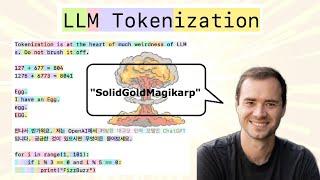Комментарии:
Let's build the GPT Tokenizer
Andrej Karpathy
Shalin Bhanot Ki Sabhi Tv Serial Ki List | All Tv Serials List [2023]
CelebrityTV हिंदी
CNC (Computer Numerical Control) Machine
Sompura & Suthars
۷ مهٔ ۲۰۲۳
یاسر بلوچ زهی
ඔහු යන්න ගියා මැකිලා.. Meme React | Adam And Vishu
Adam & Vishu


![Shalin Bhanot Ki Sabhi Tv Serial Ki List | All Tv Serials List [2023] Shalin Bhanot Ki Sabhi Tv Serial Ki List | All Tv Serials List [2023]](https://ruvideo.cc/img/upload/czk2VExxcmpDUVY.jpg)






















